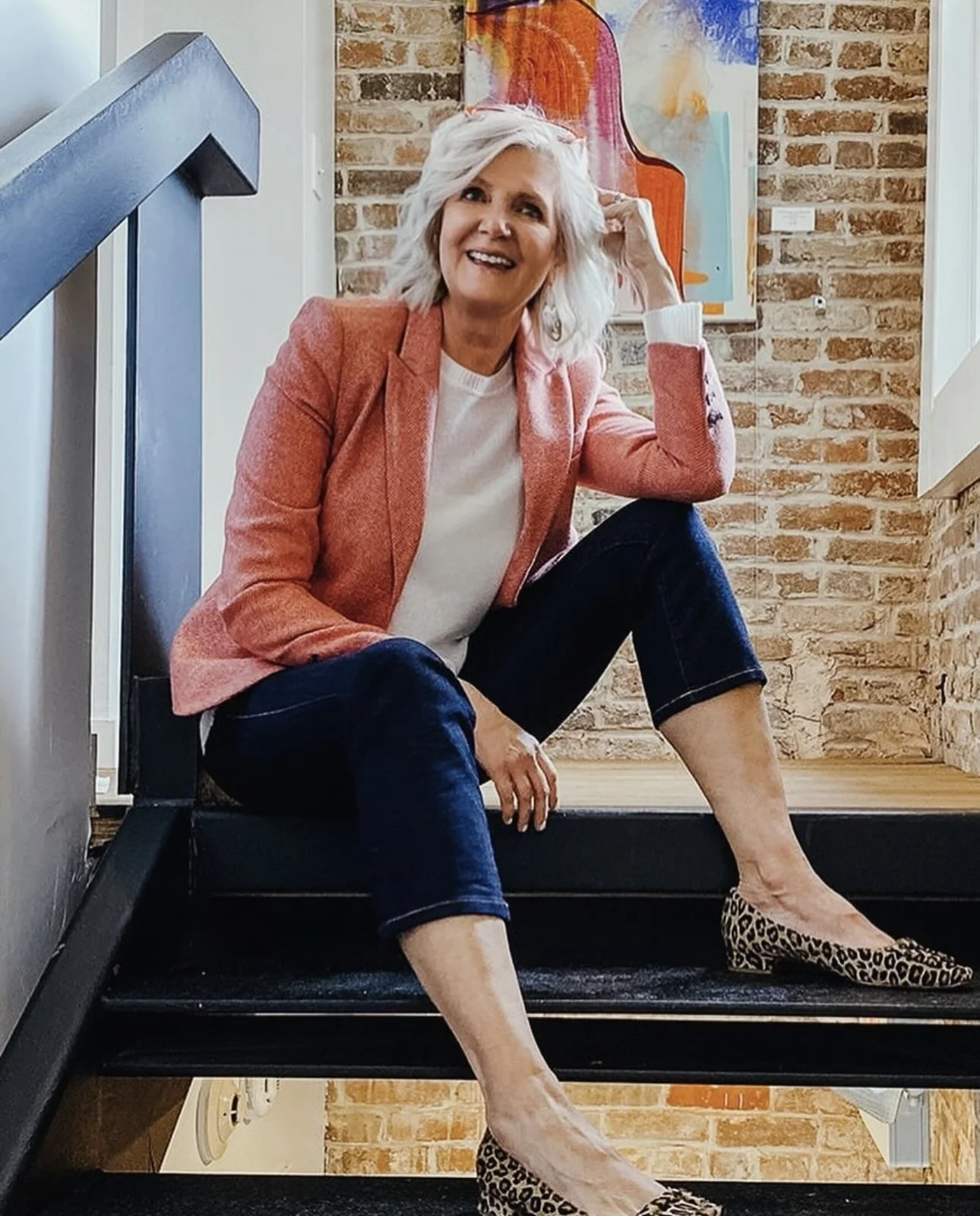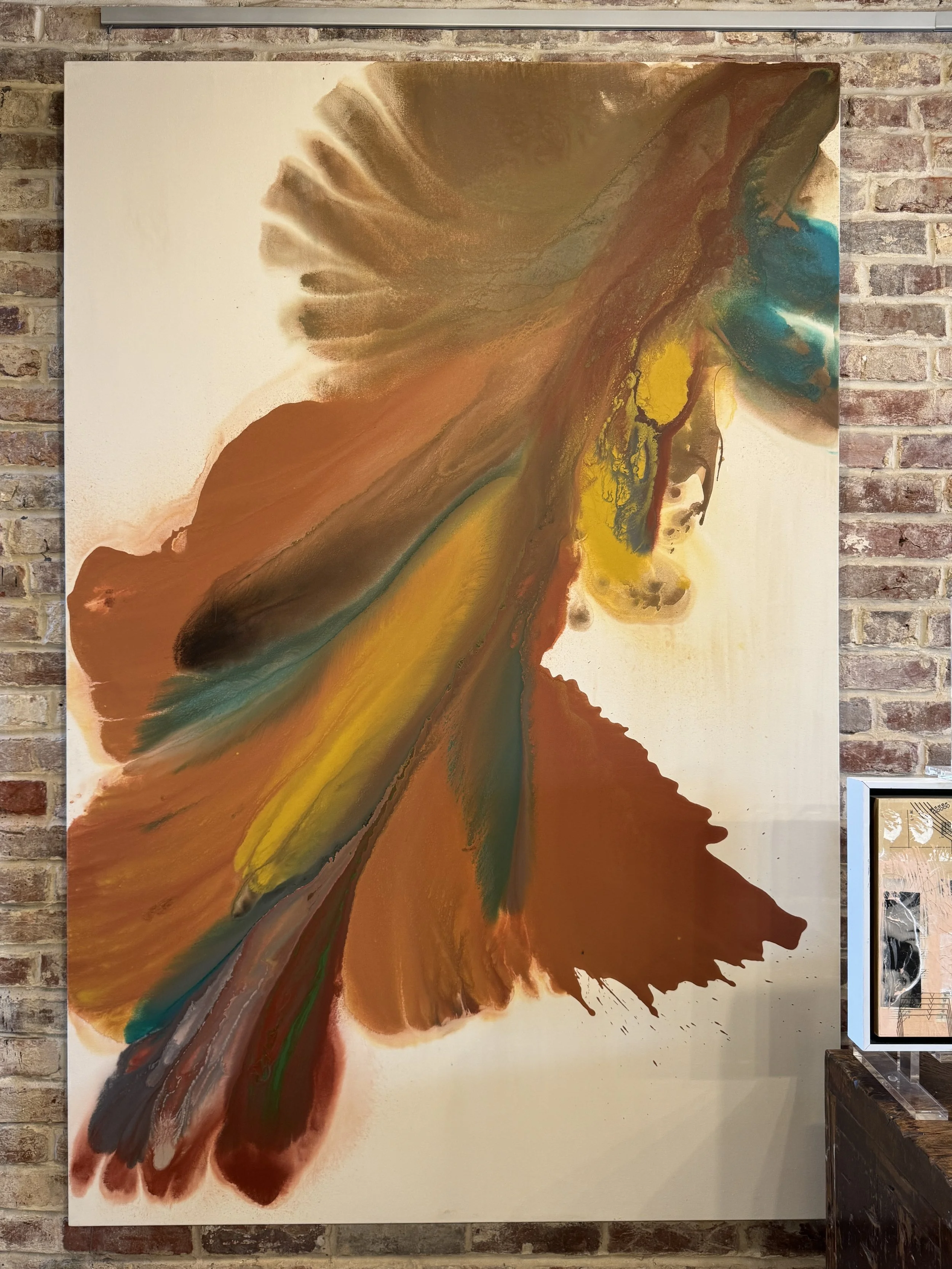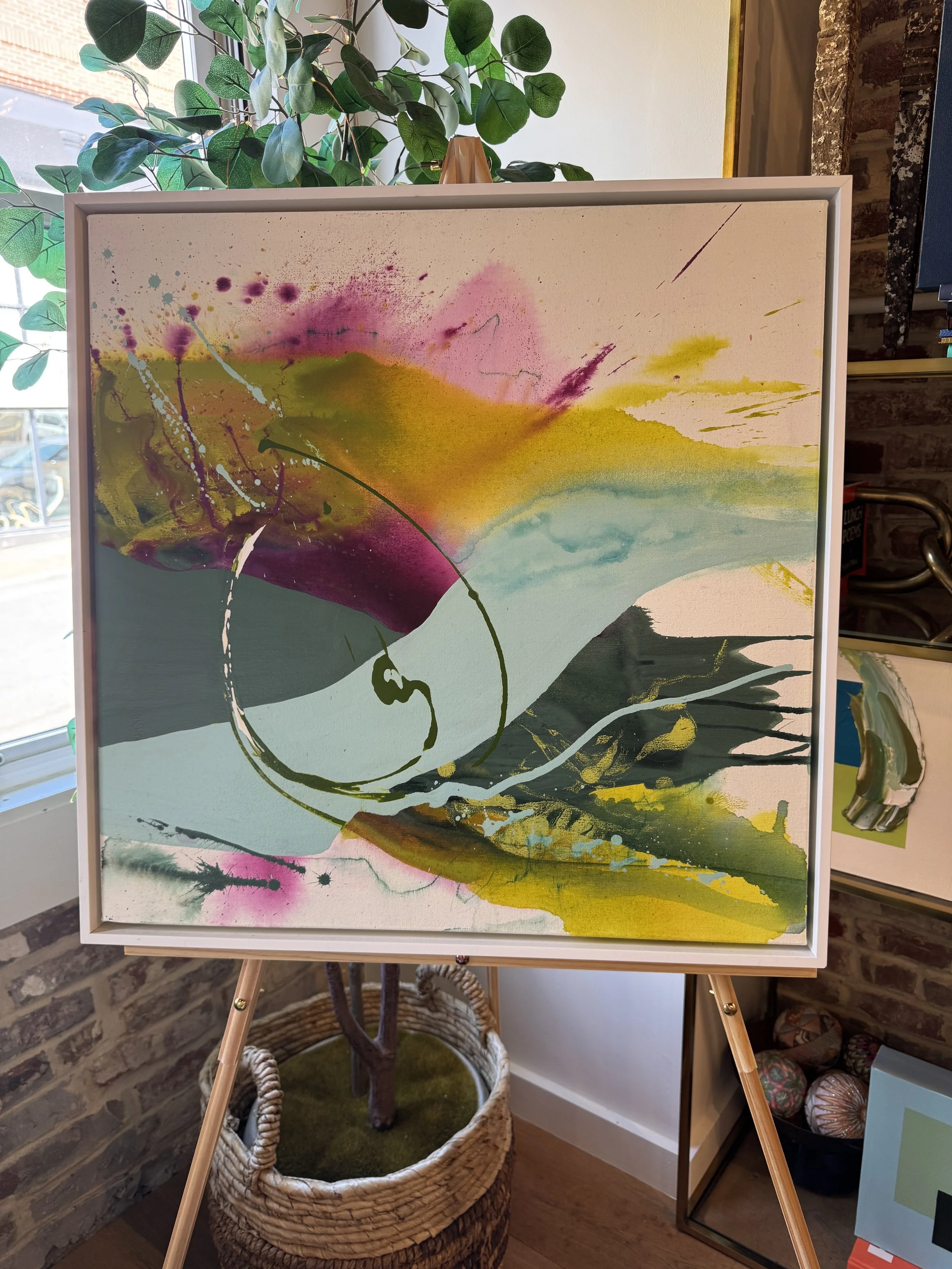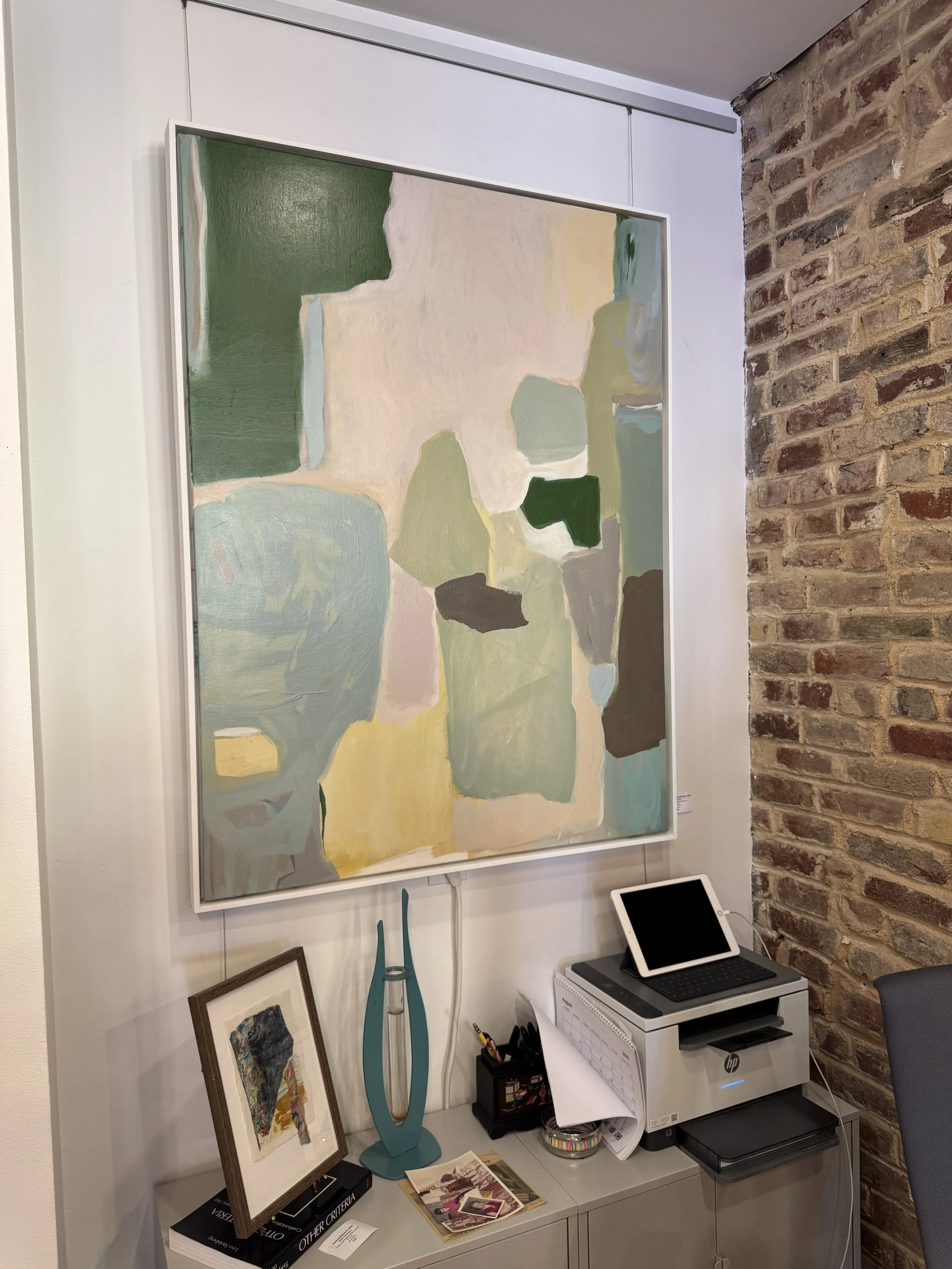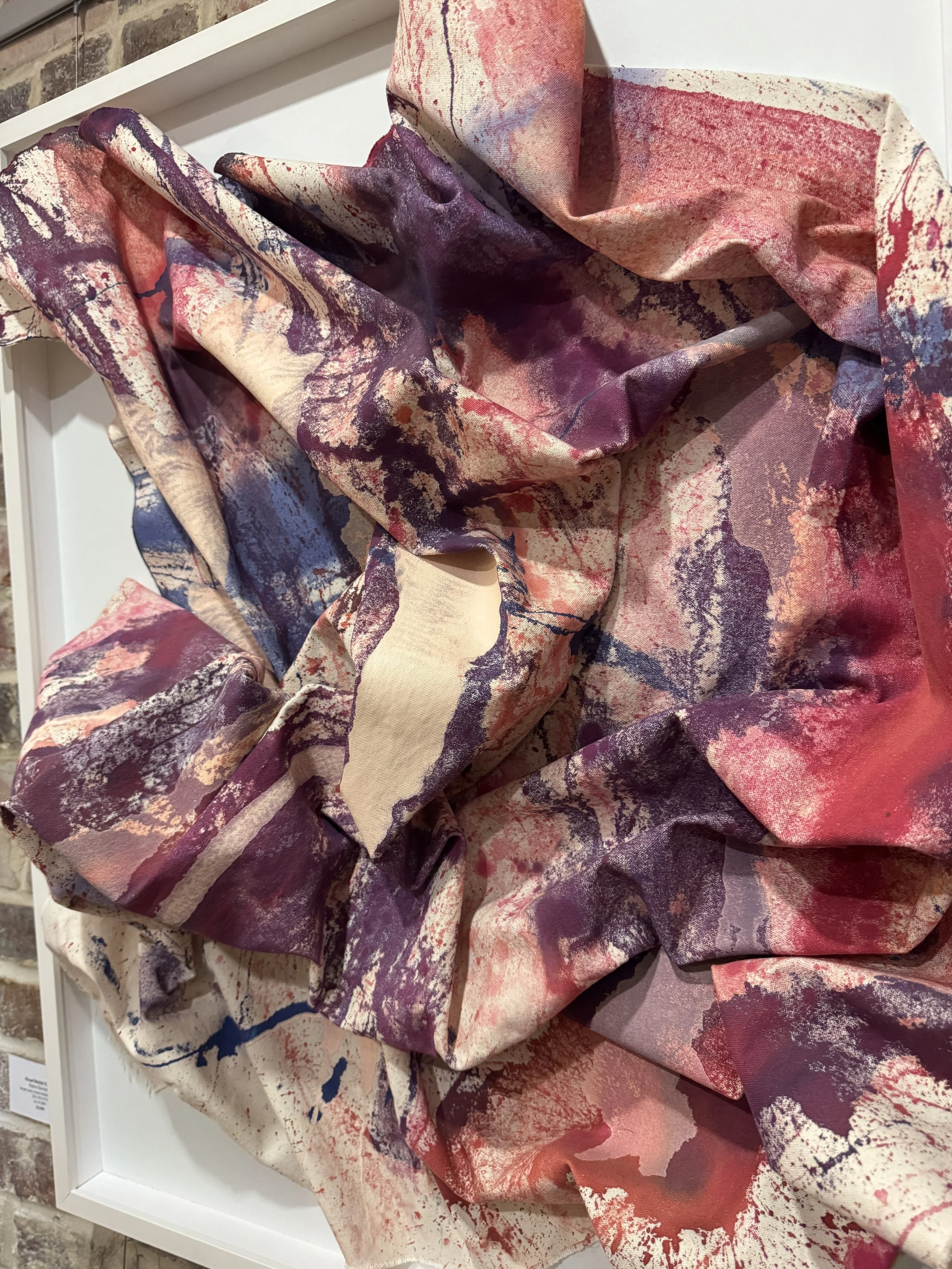From Lab Coat to Canvas: The Electrifying Journey of Abstract Artist Robin Davisson
At first glance, Robin Davisson’s story might sound like an unexpected twist: a tenured molecular physiologist at Cornell University who left the lab for the studio. But talk to her for more than a minute, and it becomes clear that science and art have always shared the same spark of curiosity in her soul. Robin didn’t plan to become an artist—it struck her, quite literally, like lightning.
A Career in Science… Until Everything Changed
For over 25 years, Robin thrived in academia. She ran large research teams, made major scientific discoveries, and commuted between D.C., Ithaca, and New York City to keep her labs running. “Planes, trains, and automobiles” isn’t a metaphor—it was her reality, sometimes with three cities in a single week. She loved the work, the process of discovery, the rigor of teaching and experimentation. But she was burning out.
When she finally took a long-overdue sabbatical, she wanted something radically different. That decision led her to the Penland School in North Carolina—a haven for artists tucked in the mountains. There was only one open class: book art. She didn’t hesitate.
“I didn’t care what it was,” Robin says. “I just needed something different. I needed to light a new part of my brain.” What she didn’t expect was to feel utterly transformed. Under the guidance of artist Brad Thomas, what began as bookbinding quickly morphed into an immersive journey through creativity and material play. Robin describes it as being “struck by lightning.” She couldn’t sleep. She couldn’t eat. All she could think about was getting her hands on more art supplies.
A New Obsession is Born
Back in D.C., Robin claimed a corner of the dining room table—then the whole table, then the breakfast nook, and eventually, a spare bedroom became her first studio. She started experimenting, learning through trial and error, taking classes, and diving headfirst into materials.
When COVID hit, Robin couldn’t secure an outside studio. Instead, she converted her home’s covered terrace into a year-round workspace—complete with tarps, heaters, and paint-splattered joy. “I painted through freezing winters and sweltering summers,” she laughs. “But I couldn’t stop. I didn’t want to stop.”
Eventually, she made the gut-wrenching decision to retire from Cornell, where she had achieved full professorship. “It’s hard to walk away from something like that,” she admits. “But this new life was calling me so loudly, I couldn’t ignore it.”
Painting Like a Scientist
Robin’s artistic process is deeply informed by her years in science. “I think like a scientist when I paint,” she explains. Her studio is filled with experiments—mixtures of acrylics and oils, raw canvas treated in unusual ways, and plenty of questions that begin with “What if?”
Rather than working with brushes, she often pours paint directly onto the canvas, tilting and shifting the surface to let gravity guide the outcome. “There’s a little bit of control,” she says. “But mostly, I’m letting go—watching the paint move, coaxing it into something new, something I never could have planned.”
Her work is process-driven, instinctual, and visceral. Color always comes first. Composition follows.
Sculpting Canvas: A Happy Accident
One of Robin’s most distinctive bodies of work, Resonance of Form, grew out of a moment of pure chance. While experimenting with raw canvas, she accidentally backed herself into a corner—literally—surrounded by wet, paint-soaked fabric. She pinned a piece to the wall to get out, walked away, and came back to find something magic: the drape, the shadow, the sculptural shape.
It took her back to childhood memories of learning to sew with her grandmother. She began experimenting again—not with brushstrokes, but with form, fabric, and physics. She even conducted a “materials study” to find the perfect medium to mold and hold shaped canvas outdoors in D.C. humidity. It’s a fusion of science and art that is uniquely Robin.
Style? It’s Evolving on Purpose
Robin resists the idea that an artist must have one fixed “style.” Instead, she embraces constant experimentation. “I think it’s a myth that artists need to have a signature style,” she says. “What keeps me coming into the studio at 5 a.m. is that it’s always different. That’s what excites me.”
Yet despite this wide range, her work is undeniably hers. Whether in layered canvases or sculpted forms, you’ll find recurring themes: bold color, scientific curiosity, and an unshakable sense of wonder.
Inviting Others Into the Process
Robin believes art becomes more meaningful when people connect not just with the work—but with the artist. That’s why she keeps her studio open. Visitors can see works in progress, ask questions, and even watch their commissioned pieces come to life.
“People get to see behind the curtain,” she says. “It’s messy, it’s experimental—and it makes the final piece feel more personal.”
Advice for Emerging Artists
Her advice to emerging or transitioning artists is simple and powerful: just start. “You don’t need a giant studio,” she says. “I started on my dining room table. You don’t even need hours—just 15 minutes a day.” The key is to leave your materials out. “If you have to clean up every time, you won’t go back. But if your paints are sitting there, ready for you, you will.”
Art That Transforms
Robin believes that a single piece of art—something you really love—can transform a room. “You don’t need a matching sofa,” she says. “If you feel something when you look at a piece, that’s enough. That’s everything.”
And for Robin, this whole journey—from lab bench to painting terrace—has been about discovery. Just like in the lab, she’s still searching for truth. The difference is, in the studio, the truth arrives in a moment—and then it moves.
Follow Robin’s evolving process and latest work at www.robindavissonart.com. Or better yet, visit her open studio and watch the magic happen firsthand.


